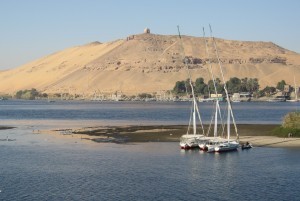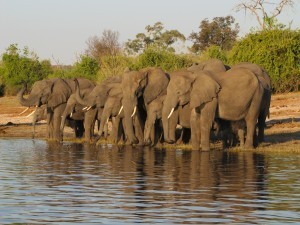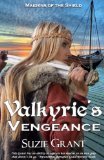Hannah Fielding's Blog, page 146
October 2, 2012
Lavender’s blue…
I love lavender, and so do the bees and butterflies in my garden in France. The fragrance is intoxicating, and very soothing, I find.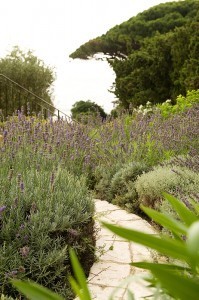
October 1, 2012
The return of Dallas
What do you think of the return of Dallas, after more than twenty years? It’s an exciting development that the hit TV series has been resurrected. Have you watched it? Do you think it will translate for a 2012 audience?
I loved TV mini-series in the 1980s. My favourite ones were French: Les Gens de Mogadore and Le Grand Batre. But I was a great fan of Dynasty also. The plot lines were dramatic and highly charged with passion and romance, and the writers had a way of structuring that made you keen to see the next episode to discover what happened next. And the characters – at the time, they were glamorous and desirable. I look back now at the outfits (such shoulder pads!) and the large hairstyles and smile; but at the time, these people were the trend-setters.
Will the revival succeed? Can you go back, back to a formula that was once successful, and twenty years on enjoy the same success? I suppose it depends on the cast, the storylines and the writing. But even if just for the sake of nostalgia, I can see many people taking an interest in the soap opera.
I wonder why they don’t play re-runs of old favourites like these on television. We have so many channels, but most seem to be consumed by ‘reality TV’ programmes. It would be wonderful if programmers could delve in their archives and play the programmes we once loved, to allow us to relive the magic once more.
The revival of Dallas made me wonder what they may resurrect next. Dynasty? I hope so.
September 29, 2012
Sowing the seeds for a novel
An idea can come from so many places. A piece of music. A tranquil moment looking at beautiful scenery. An overheard conversation. A memory.
My first novel, Burning Embers, was inspired by my travels in Kenya, an amazing sunset and a sleepless night during which I gazed out at the Mediterranean and dreamily watched a cruise ship go by. The germ of the idea appeared in my mind, and from there, with time, space and nurturing, it grew into the story which then demanded to be written down.
But what happens when inspiration does not come unexpectedly, when you have to seek it out?
When I’m writing a new book, I do my best to open up and to allow my mind to wander – and then to accept thoughts and thought processes without judgement. Indeed, I try not to think too much, but let my mind wander. I stroll aimlessly through landscapes that appeal to me; I sit on a veranda and gaze at the sky, the sea, the trees; I close my eyes and drink in the scents of my garden; I sit in a public place and people watch. And I drift into my memories, searching for a scene or an understanding that resonates.
Recently, I have found myself thinking about Egypt. Such an ancient land, steeped in legend and artefacts and fascinating structures such as the Pyramids. When I was in my teens my parents, my sister and I went on a Nile cruise that carried us through an ancient world of relics and ruins fromLuxortoAswaninUpper Egypt. As we glided on the Nile, the scenery on either side of us of endless fields stretching afar, peppered with tiny villages with their mud walls and winding ways fringed with palms, was a picture postcard depicting peace-abiding people living today as they had lived a thousand years ago. The perfect setting for a romantic novel, I now realise.
It is settings, you see, that most draw me in. Once I know where my book is to be set, then the characters and the story start to unfold in my mind. But for me, the setting is the foundation that grounds the entire book. And because I want to transport the reader to the place in which my characters are falling in love, I am careful to research it thoroughly, which involves reading materials but also exploring in person. Which means a trip to Egypt may perhaps be on the cards soon…
September 28, 2012
The wisdom of the elephant
My novel Burning Embers is set in 1970s Kenya, and as such I was able to bring in descriptions of many of the wonderful creatures that are native to the land. Of them, one of my favourites is the elephant. Majestic, mighty and breathtakingly large – the largest land mammal. There’s a gentleness about their manner, and yet they can be fierce and, of course, deadly. But most of all, when you look into an elephant’s eyes you can feel its intelligence. They are among the most intelligent animals on earth, with a brain remarkably similar to that of the human.
In the book I touch on the hotly topical issue of hunting and poaching in Kenya at the time, and one of the animals under threat is the elephant. In the decade following the 1970s, the elephant population halved due in large part to the ivory trade. Tragic indeed.
In researching Burning Embers, I read into Kenyan history, culture, legend and folklore. I particularly enjoyed reading proverbs, and I weaved some into the fabric of the story. I was struck by how many African proverbs relate to the land’s native creatures, and the characterisation of the elephant was intriguing.
Many proverbs relate to the size and strength of the animal:
Wise men say that with ropes made from a woman’s hair, one can easily tie an elephant.
When two elephants jostle, what gets hurt is the grass.
An elephant does not die from one broken rib.
Even if the elephant is thin he is still the lord of the jungle.
The elephant that is stuck in the mud will tear down the tree with it.
An elephant which kills a rat is not a hero.
The hunter in pursuit of an elephant does not stop to throw stones at birds.
The lion may be king of the jungle but he knows, he shouldn’t stand in the way of the elephant.
But then some also touch on vulnerability:
Even an ant can hurt an elephant
The jungle is stronger than the elephant.
What stayed in my mind the most from my reading, though, was the vulnerability, emotional response and intelligence of the elephant. Have you heard of the mythical elephants’ graveyard? It’s a place that crops up in various legends and works of fiction. Supposedly, elephants who know that death is calling leave their herds and travel to the graveyard, where they lie with the remains of thousands of their kinds. Fantastical? Perhaps. But there is some basis for the legend, for elephants are in fact drawn to bones.
Researchers in Kenya and the UK studied elephants’ reactions when they found bones. Those belonging to any other species were ignored; but when the bone was of an elephant, some African elephants become agitated. They recognise that the skeletal remains as belonging to their own kind, and they are moved by that fact. New Scientist published a fascinating article on the research at http://www.newscientist.com/article/dn8209.
As for the other well-known legend relating to elephants – that they never forget – it has been proven as true. According to Scientific American, it’s no myth. Elephants remember faces and they retain a mental map of the areas over which they roam. Given that we have established that elephants are mighty, strong beasts and that they never forget, you would think hunters in the times of Burning Embers would have been warier about upsetting these animals. Thank goodness for worldwide conservation work and the vilification of hunting that has helped to keep these wonderful animals alive.
September 27, 2012
Book review: Ryan’s Return by Barbara Freethy
A book full of secrets, tragedy, romance, scandal, dysfunctional families, ghosts… and tea leaves.
Ryan’s Return is based in the fictional Serenity Springs, a small town with a river at its heart. Kara, a divorcee, has recently returned to Serenity Springs with her young daughter and opened and bed and breakfast in her aunt’s old house close to the river. In a bid to increase the town’s profile, Kara invites Ryan Hunter, an award-winning photojournalist who grew up in the town, to be guest of honour at the town’s centennial celebrations. Twenty-five years ago, when the river last flooded, Kara and Ryan’s lives were changed forever. Now, as the river rises once more, ‘the secrets of years past are washed ashore and brought to life’.
I really love the description and personification of the river in this book:
‘She’s just like a woman… She gives life, brings peace, and nurtures the land. And when she is angry, all hell breaks loose.’
‘I haven’t seen her this fast in years. She’s roaring with passion.’
Every character in this story has been affected by the river in some way; consequently, some love it, some loathe it. Either way, the river holds the key to the many mysteries of the people, past and present, in this small town.
This book considers some emotive subjects such as what it is to be a father, or a family; guilt and grudges, and letting them both go; and what you would do for those you love, or give up to keep hold of them. The characters were real and likeable, and I found myself hoping for happy endings for them all. There were elements of the spiritual with a ghost or spirit, which, although unusual for this genre, were cleverly woven into the plot and would not be off-putting for those that do not believe.
Overall, I found this book to be an emotional and lovely read, with mystery and romance. Above all, it also reminds we are only a small part of this world, and when a river is stirred, nothing can hold it or its secrets back.
Ryan’s Return is available now from Amazon; click on the book cover below to visit the store
September 26, 2012
A pensive moment
On the rocks in Ste Maxime gazing out to sea.
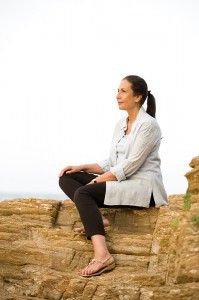
September 25, 2012
Favourite poem: A Sunset
There is something about a sunset that stirs the soul. It’s majestic, inspiring – the colours and textures; like some almighty being in the heavens is using the sky as a canvas. I defy anyone to notice a beautiful sunset and not be moved; to miss the romance of the moment. For me, ideas for writing are embodied in that still, settled moment where day becomes dusk becomes night.
People ask: If you could throw a dinner party and invite anyone, whom would you ask? Top of the list for me would be nineteenth-century French poet Leconte de Lisle. I think, over a bottle of fine wine and some French cuisine, we would find common ground. For his poetry has been inspirational for me in finding my style as a writer. Like me, de Lisle was a man obsessed with detail, determined to paint scenes in vivid hues and transport the reader of his work to the location to describe, to feel, touch, taste, hear, see each element. His poem ‘A Sunset’ is one of my favourites, because it transports me to an exotic location where nature is undisturbed and wild animals run free. It is passionate, powerful and wonderfully evocative.
As always, my thanks go to John Harding for his expert translation; and I provide the original French version of the poem, which I highly recommend you read aloud because the French phrasing is so pleasing on the ear, and so passionate. The final couplet sends shivers down my spine: La nuit traîne son noirs velours / Sur la solitude du monde.
A Sunset
On the shore of a fair land,
Beyond the Pacific swells,
Two tall spreading palm-trees
Sway their stately fronds.
In their shade, like some nabob
Lying dreaming near mid-day,
There sleeps a great Punjab tiger,
Stretched out upon the rosy sand;
And, down along the gleaming boles,
As in paradise at the first creation,
Two serpents wind round their knots
In glowing coils.
Nearby, a satiny bay,
In which the foliage is reflected,
Washes an old Byzantine palace
Of red and purple bricks.
Next, black swans, in thousands,
With wings spread to the wind frolicking there,
Mark out their course, at the foot of the flights of steps, along the border
Of the crystal water with their prows.
The horizon is vast and cloudless;
Scarcely is there seen, in the calm heavens,
Rising and falling in the azure blue
The throbbing of the palms.
But it is now that, in the bright red sunset,
The Roc arises, scarlet:
In its beak it holds the sun,
And thunderbolts in each clawed foot.
On the breast of the aged bird,
Which smokes, sparks and bursts into flame,
The heavenly light sinks down and lets out a stream
Coloured in gold, amber and topaz.
A resplendent Niagara,
That mighty river tumbles down into the cloud-banks,
And rebounds, leaving behind
A mass of foam pierced with flashes.
Suddenly, Orion the giant,
Or some ancient sagittarius,
Towards the northern expanse
Stands up tall and athletic.
The Hunter bends his iron bow,
Drawn all red from the forge,
And, taking a step upon the sea,
Shoots the Roc through the throat.
With a beat of its wing, the bloodstained bird
Plunges across the outstretched sky;
And the sun falls burning,
And shatters its bulk in distraction.
Then wreathes of fire
Devour far-spreading grasslands,
Spring forth, and, from the blue zenith,
Rain down floods of gemstones.
On the face of the moving heaven
Flaming fragments lie;
A last gush blows out into the wind
Eddies of crimson and of shadow;
And swelling out by clumsy fits,
Dumb, baleful, unfathomed,
The night draws its black velvet
Over the earth’s loneliness.
Un coucher de soleil
Sur la côte d’un beau pays,
Par delà les flots Pacifiques,
Deux hauts palmiers épanouis
Bercent leurs palmes magnifiques.
À leur ombre, tel qu’un Nabab
Qui, vers midi, rêve et repose,
Dort un grand tigre du Pendj-Ab,
Allongé sur le sable rose ;
Et, le long des fûts lumineux,
Comme au paradis des genèses,
Deux serpents enroulent leurs noeuds
Dans une spirale de braises.
Auprès, un golfe de satin,
Où le feuillage se reflète,
Baigne un vieux palais byzantin
De brique rouge et violette.
Puis, des cygnes noirs, par milliers,
L’aile ouverte au vent qui s’y joue,
Ourlent, au bas des escaliers,
L’eau diaphane avec leur proue.
L’horizon est immense et pur ;
À peine voit-on, aux cieux calmes,
Descendre et monter dans l’azur
La palpitation des palmes.
Mais voici qu’au couchant vermeil
L’oiseau Rok s’enlève, écarlate :
Dans son bec il tient le soleil,
Et des foudres dans chaque patte.
Sur le poitrail du vieil oiseau,
Qui fume, pétille et s’embrase,
L’astre coule et fait un ruisseau
Couleur d’or, d’ambre et de topaze.
Niagara resplendissant,
Ce fleuve s’écroule aux nuées,
Et rejaillit en y laissant
Des écumes d’éclairs trouées.
Soudain le géant Orion,
Ou quelque sagittaire antique,
Du côté du septentrion
Dresse sa stature athlétique.
Le Chasseur tend son arc de fer
Tout rouge au sortir de la forge,
Et, faisant un pas sur la mer,
Transperce le Rok à la gorge.
D’un coup d’aile l’oiseau sanglant
S’enfonce à travers l’étendue ;
Et le soleil tombe en brûlant,
Et brise sa masse éperdue.
Alors des volutes de feu
Dévorent d’immenses prairies,
S’élancent, et, du zénith bleu,
Pleuvent en flots de pierreries.
Sur la face du ciel mouvant
Gisent de flamboyants décombres ;
Un dernier jet exhale au vent
Des tourbillons de pourpre et d’ombres ;
Et, se dilantant par bonds lourds,
Muette, sinistre, profonde,
La nuit traîne son noirs velours
Sur la solitude du monde
September 24, 2012
Is a love for romance books and films damaging your love life?
I will happily confess to being a hopeless romantic. I adore romance novels – the more romantic and passionate, the better. I love to curl up and watch a romantic movie. I’d choose watching Phantom of the Opera over Stomp in the West End any day.
I’ve been this way as long as I can remember. As a tiny girl, I was enchanted by romantic fairy stories in books and told by my governess. By my teens I was devouring passionate French novels, and sighing dreamily over Hollywook hunks on the big screen. And as soon as I realised that with nothing more than a pen and paper I could create my own wonderfully romantic worlds in which both I and others could escape, I had found my raison d’être.
I know that I am not alone in my ardent romanticism. But according to a survey (http://www.livescience.com/23290-belief-in-tv-romances-could-hurt-your-love-life.html) whose results were published recently, the fact that I’m ‘a sucker for romantic shows and movies like Pretty Woman’ means I’m less likely to be committed in a relationship: ‘The participants who had higher belief in TV romance were less likely to be committed to their current relationships and more likely to be drawn to alternatives to their current partner, the research found. (Alternatives included a different partner or being single.)’ There is a suggestion that people who ‘buy into’ romance as portrayed in the media are less likely to have successful relationships.
I’m not convinced. Clearly, I’m very happy to sigh over Robert Redford as Jay Gatsby in The Great Gatsby. But I’m also very happily married. I think if you asked most people – women in particular – whether reading romance novels and watching romantic programmes and films boosts their romance or created false ideals that then damage their relationship, the vast majority would say that romance is a good thing for their relationship. After all, don’t we love to watch a romantic movie with a partner on a date? Doesn’t this make us starry eyed and put us in the mood for an end-of-the-evening kiss?
More to the point, I think you would have a hard time convincing any person who is romantic to the core to be more of a realist – to dream less, hope for less, be more practical – to decide the light moving across the night sky is a Boeing 747 rather than a shooting star. Being romantic is a way of life; you can’t change it, and nor would you want to. In fact, the very idea that romance should be toned down sounds like a plot device in a romantic story – the heroine believes in true love, but the world is telling her to get real. What ending do you prefer: she gives up on true love, or she ignores those who are telling her to change, perseveres and gets that happy-ever-after?
September 22, 2012
Career and love compatibility
When developing the idea for a novel, one of the areas I must consider carefully is the job of the hero and the heroine. Sounds superficial and unimportant, perhaps… after all, we are not our jobs; we are much more besides. But the job of a character is important for two reasons
First, the career helps convey the identity of the character. For example, Coral in Burning Embers is a freelance photographer, and this tells us much about her character. That she takes photos for a living tells us that she is creative and interested in the world around and in different perspectives – and possibly also that she feels comfortable being a spectator rather than feeling the need to be an actor, in the centre of a drama. That she is photographing animals tells us that she cares about wildlife and respects the creatures that are native to Kenya. And that she is freelance, rather than employed, says much about her independence and her courage in following her own course.
Rafe, the hero, is also self-employed – running a successful sisal plantation and a nightclub. The nightclub element shows us that he has a sensual side with which he is very much in tune. And of course his independence and success in business make him attractive as a love match.
The second important element of career choice comes down to compatibility. Interestingly, a recent survey has found that you are most compatible with someone from a different career to your own (http://www.dailymail.co.uk/femail/article-2195922/Women-teachers-likely-firemen-How-career-affects-date.html). According to the survey, the following couples are most compatible: banker and teacher or doctor, and teacher and fireman. That may be so, but I believe there needs to be some common ground – some similar values when it comes to career.
Do a freelance photographer and a self-employed businessman as in Burning Embers have enough in common? Will each understand the other’s career, support it, respect it, value it? Do their careers allow for mutual balance; equilibrium, so one is not carrying the other? Yes, I think so. Each gives the other a chance to see them at work, and each finds their love deepened by getting to know this facet of the other. And as Sigmund Freud put it, ‘Love and work are the cornerstones of our humanness.’
September 21, 2012
Book review: Valkyrie’s Vengeance by Suzie Grant
From the blurb:
One woman’s journey to the truth… Stranded on foreign soil, a Viking maiden is rescued and raised by the enemy. After witnessing the brutal slaughter of the Saxon woman who saved her life, Tyra Svensdottir declares war on her own people by kidnapping the dark Viking to carry out her revenge. Her quest takes them across the frigid waters to Iceland on a sensual voyage she never anticipated and only the gentle assault of a green-eyed Viking can soothe a heart infested with revenge.
One man’s quest to save his people… A warrior destined to be king, and the man who wields a mythical sword, Rorik Thorlicksson must yield to his mysterious captor to uncover her dark past. When the truth is revealed he is determined to redirect her wrath to more pleasurable pursuits, although their forced intimacy reveals a deep yearning he’d long ago buried and an obscure past he is just beginning to unravel.
Blood vengeance brings them together, but will desire unleash a love that brings an end to A Valkyrie’s Vengeance?
I thoroughly enjoyed this book. I was hooked from the first chapter, which plunges you into action and ends in such a tantalising way I was compelled to read on – indeed, I finished the book in a day. I found the era (900s AD), the peoples (Vikings versus Saxons) and the settings (England and Snowland – Iceland) fascinating, and the book is clearly well-researched and is, consequently, believable. I most enjoyed getting an insider’s perspective on both Saxon and Viking life, and their varying points of view and passions.
If you are looking for a book in which the heroine is feeble and requires constant rescuing by a dominating man, this book is not for you! Tyra is fabulously courageous and strong; her character is, I think, realistic for the time, but her ability to kill and maim is of course grisly reading for a modern reader. I loved the interplay between Tyra and Rorik, and the fact that each is given room to both protect and be protected by the other. I was quite swept away in their romance, but was glad that this did not consume the book – there is an interesting, suspense-full tale that had me turning the pages.
As well as creating a believable and compelling story, Suzie writes in such a way that I was transported back in time. Her descriptions and timing are wonderful. Here’s an example:
The morning mists evaporated under heat of the sun. She shivered, wishing he would leave so she could finish her bath in peace and yet, at the same time, she wished for him to stay.
Seconds later, a splash of water brought her around, and her eyes widened as he slogged toward her. Naked. Beautiful. Prideful. Intent not on conquering but on seduction. A man determined to make her see reason or make her pay for her sins.
A passionate, evocative romantic historical novel that gets five stars from me.
Valkyrie’s Vengeance is available now from Amazon; click on the book cover below to visit the store.

